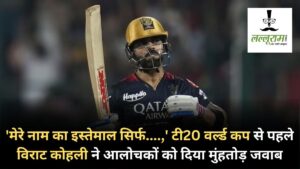The check-mates
4 min readA month earlier than what was thought-about the match of the century in chess — the World Championship title bout between Bobby Fischer and Boris Spassky in Reykjavik in 1972 — the House of Soviet Cultural Centre in then Madras approached Manuel Aaron, then the one worldwide grasp within the nation, to begin a chess membership. Aaron had no second ideas. In a bit time, and a fortnight earlier than Spassky conceded defeat to Fischer over the telephone, altering the chess dynamics of the world, Madras had its first formal chess membership within the library of the Soviet centre.
If Fischer’s victory led to a chess increase within the US, hitherto a chess hinterland, it sowed the seeds of a chess revolution in Madras as nicely, laying the bottom for it to emerge because the chess nursery of the nation.
Aaron, now 86, recounts how the Soviet-US Cold War spilled onto the chessboard and reached so far as the Tamil Nadu capital on the time. “The match had so many layers that even those who did not follow chess started talking about it. The match was keenly followed even though there was no streaming or television coverage those days. We used to wait for some information from officials at the Cultural Centre,” he says.
The chess membership was named after the legendary Soviet participant Mikhail Tal, Aaron’s favorite, and one whom he would encounter in a Chess Olympiad match. The centre supplied him all of the infrastructure, Aaron says — chess blocks, boards, books and magazines like Schachmatny Bulletin, Chess in USSR, and 64.
Aaron would translate these into English, having taken up Russian on the centre in order that he might entry Soviet journals and make the identical accessible to different chess gamers. “Western publications were expensive whereas the Russian ones were free. I thought it would be useful for the next generation to have access to chess literature,” he says.
Vehicles ply on the Napier bridge, painted in a black and white checkered sample, forward of the forty fourth International Chess Olympiad at Mamallapuram close to Chennai, July 16, 2022. (PTI)
With a grand price of Rs 4 a 12 months for upkeep, the membership quickly had so many within the ranks {that a} separate small complicated needed to be constructed on the premises. Serious, semi-serious and leisure gamers spent hours right here locked in intense video games.
Aaron, in the meantime, hunted for a younger participant he might groom right into a world champion. “I used to tell friends that given the right opportunities, I could produce the country’s first world champion in 15 years. In every young player that walked into the club, I looked for that spark,” he says.
Three years on, a five-year-old boy with massive, spherical eyes and hair combed onto his temple got here in. It was Viswanathan Anand, and Aaron noticed him virtually instantly. “There was something about him, you knew he had a special talent,” he says.
After a 12 months or two, Anand moved to the Philippines the place his father labored. By the time he returned to the membership two years later, he had a sooner, evolved-for-his age sport. “He had a tremendous blitz game, and I don’t remember him ever losing. The funny rule was that whoever lost should get up from their chair. Anand never got up,” Aaron says.
Occasionally the membership would see worldwide Grandmasters like Yuri Averbakh, Vladimir Bagirov and Evgeni Bebchuk drop in, and play a simul. This helped the event of chess tyros like Anand.
The actual passing of the mantle got here when Anand, 14, beat Aaron in a classical sport in 1983. Four years later, he grew to become the nation’s first Grandmaster. The singular second modified the historical past of Indian chess.
A couple of years later, after the disintegration of the Soviet Union in 1991, Tal Chess Club needed to be shut, because the now named Russian Culture Centre started to demand a hefty hire.
The faces of DMK luminaries, from the ruling occasion’s founder C N Anna Durai to former CM M Karunanidhi and now Stalin to the rising Udhayanidhi Maran have been embossed onto a chess board. (Express Photo)
But by then, a chess tradition was already flourishing within the metropolis, new golf equipment had been up, the state affiliation was organising extra tournaments, and town had a figurehead, Anand. “He inspired a generation of us to play chess. We were all his fanboys, following each game, analysing each move of his,” remembers R B Ramesh, one of many 23 Grandmasters Tamil Nadu was to provide after Anand.
Over the subsequent twenty years, Anand would change into the World Champion (in 2000), World No. 1 (2007), reclaim his misplaced crown (2007), and fiercely defend it thrice, earlier than Magnus Carlsen dethroned him. “Everything about him is inspiring, especially the way he guides youngsters, grooming them and playing with them,” Ramesh says.
Among gamers set to take the legacy of Chennai chess ahead are D Gukesh and R Praggnanandhaa, each simply 16, each Grandmasters, the quickest and the second quickest Indians to finish the GM norms.
You can virtually hint the household tree — Aaron on the prime, Anand within the subsequent rung, each alone, earlier than the branches unfold, with Ok Sasikaran and R B Ramesh, adopted by B Adhiban and S P Sethuraman, after which Gukesh and Praggnanandhaa.
Newsletter | Click to get the day’s greatest explainers in your inbox
And the roots lie right here, in a former library of the Soviet Culture Centre, born on the peak of the Cold War, in opposition to the backdrop of a proxy struggle on a chess board, performed out in Iceland’s Reykjavik, over practically two months.






